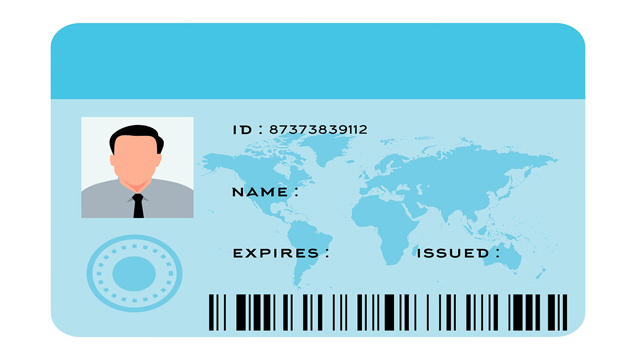Category: Newsletters
A General Guide to Property Transfers and ATO Clearances

Transferring property in Australia involves legal and taxation considerations, including dealing with the Australian Taxation Office (ATO) for clearances and pertinent notifications. Property laws are complex, so it is important to understand the general process to transfer a property legally and in accordance with ATO conditions.
Contract of Sale
To begin transferring a property, a contract of sale between a vendor (seller) and a purchaser (buyer) must be signed. The contract of sale outlines the details of the property, the purchase price, the terms of sale, including any special conditions of sale, and the date of settlement.
Conveyancing – Pre-settlement
Conveyance is the legal process of transferring property from one owner to another and is conducted prior to settlement. Administrative tasks – such as preparing and exchanging legal documents, checking that a property’s title is clear of encumbrances, arranging a property inspection and investigating the taxation obligations on both the seller and the buyer – must be completed.
Stamp Duty
Stamp duty is a tax imposed by state governments on property transfers. The amount is determined by a property’s location and value. Stamp duty must be paid prior to settlement.
ATO Clearance Certificate
The ATO plays a role in property transfers to ensure that relevant taxes are paid by both parties. A clearance certificate is provided by the ATO which confirms that a seller is an Australian resident – and not a foreign resident for taxation purposes – and is therefore not subject to a withholding tax obligation.
A seller of a property valued at $750,000 or more is required to supply a valid clearance certificate to a buyer at or before settlement to avoid a buyer withholding an amount of the sale price (currently 12.5%) to meet a Foreign Resident Capital Gains Withholding (FRCGW) tax obligation.
Once a clearance certificate has been issued, it is generally valid for 12 months.
Capital Gains Tax (CGT)
Any profit made from a property sale may incur a CGT liability. Capital improvements, such as renovations, and other factors must be recorded and the ATO will advise if CGT is payable by an Australian resident seller.
Settlement
On the date of settlement stipulated in a Contract of Sale, the final payment is made, and legal ownership of a property is transferred from one owner to another. Typically, legal representatives or conveyancers assist with the final payment and document exchange.
Transfer of Title – Post-settlement
After settlement a property transfer must be registered with the relevant state authority and the property title via a ‘Transfer of Title’ document is updated to reflect the new owner.
Seek Financial and Legal Advice
Due diligence in the transfer of property will alleviate the burden of what can be a complex undertaking for both sellers and buyers. It would be prudent to ask certified and experienced financial and legal professionals for guidance to ensure a smooth selling and buying process for all parties.
How can YML help?
Talk to our YML Chartered Accountants Team today to see how YML Group can assist you with your property transfers. For more information, view our website and contact us on (02) 8383 4400 or by using our Contact Us page on our website.
NEW Register of Foreign Ownership – Do you need to notify it?

Australia’s Foreign Investment Review Board (FIRB) is a government body that manages foreign investments and purchases of Australian land and securities. When a foreign investor is granted permission by FIRB to buy land, property and securities in Australia, the foreign investor is obligated to register any changes to ownership to the new Register of Foreign Ownership of Australian Assets, which falls under the Foreign Acquisitions and Takeovers Act 1975 (Cth) (FATA).
The new Register is not publicly accessible.
What changed from 1 July 2023?
From 1 July 2023 the new Register under the FATA is effective and foreign investors who acquire or dispose of an entity or their interest changes by at least 5% in an entity, then they must notify the new Register within 30 days of when the holder of an interest is aware, or, as some changes are passive, ought reasonably to be aware, of a change.
Is FIRB approval still necessary?
Yes, foreign persons wanting to invest in Australian interests must apply for and be granted FIRB approval prior to any purchase of an eligible entity.
The new Register is an additional regime for foreign investors and is part of the FATA, ensuring that foreign investment is regulated in accordance with Australia’s national interest and to the benefit of Australia’s economy.
Is there a cost for notifying the new Register?
No, there is no cost for notifications to the new Register. There remains a cost, indexed annually, for applying for and seeking FIRB approval which must be received prior to an acquisition.
For what interests must notification be given?
Foreign investors must notify the new Register of the following actions occurring from 1 July 2023, including but not limited to:
- an interest in Australian land, excluding equitable interests of less than a 5-year lease or licence in agricultural land
- a legal interest in a share or unit of an Australian land corporation/trust or in the trustee of an Australian land trust
- an interest in an exploration tenement
- registrable water interests
- an acquisition of shares or assets of an Australian business or entity, notifiable under the FATA
Generally, acquisition and/or disposal of, or changes to, interests prior to 1 July 2023 do not require notice to be given to the new Register.
However, if you become a foreign person and are a holder of interests, regardless of when the acquisition of your interests occurred, notice must be given to the new Register.
The FATA obliges foreign investors to provide notice of changes as they occur over the period of ownership. If the interest changes in nature OR the percentage interest changes OR land or securities are sold or a land lease ceases OR if you cease to be a foreign person, then, among other changes not herein mentioned, these must be reported to the new Register.
Review and Update Accounting Systems
Foreign persons are required to keep records of register notices for five (5) years and failure to do so may constitute an offence, so it would behove foreign persons to undertake a review of their internal accounting systems and processes to ensure prudent record-keeping and legal compliance with the FATA’s new Register.
Your existing accounting procedures might now need to be updated to monitor Australian investment activity more closely and to fully encompass the broad range of notification requirements of the new Register.
How to notify the new Register
Foreign investors must use the Australian Taxation Office (ATO) portal by:
- Setting up a myGovID account;
- Verifying their identity; and
- Registering as a foreign investor
You may choose to appoint YML Legal to lodge register notices on your behalf. YML Legal has the professional expertise to guide you through the new register’s obligations for foreign investors.
How can YML help?
Talk to YML Legal today to see how YML Group can assist you with your foreign investment notifications. For more information, view our website and contact us on (02) 8383 4499 or by using our Contact Us page on our website.
Do you want to make Interest-Only Repayments?

If you’re an investor with an interest-only investment loan that is going to revert soon to principal + interest repayments, OR you have a high principal + interest investment loan, then call YML Finance on (02) 8383 4466 and talk to us about our new product.
We have a new product that could potentially help you to go back to making lower interest-only repayments on your investment loan.
Reach out to us NOW and learn more about how we can help you by calling us on (02) 8383 4466 and requesting a callback or making an appointment with the YML Finance Team.
How can YML help?
Talk to our YML Finance Team today to see how YML Group can assist you with investment loan repayment options. For more for more information, view our website and contact us on (02) 8383 4466 or by using our Contact Us page on our website.
YML Chartered Accountants Digital Transformation

To align with the digital world and embrace technological advancements, you will notice some changes in documentation such as tax return and financial statement format, starting from 1st Jul 2023, some of our client's YML service invoices will be sent via Xero, a trusted and secure online accounting software. We want to assure you that this change is entirely legitimate and not a fraudulent activity. You can expect to receive your invoices directly from Xero on our behalf.
If you have any questions or concerns regarding the new way, we send your invoice or any other matter, please feel free to reach out to our team. We value your feedback and are always here to assist you.
How can YML help?
Talk to our YML Chartered Accountants Team today to see how YML Group can assist you. For more information, view our website and contact us on (02) 8383 4400 or by using our Contact Us page on our website.
Superannuation Guarantee Rate – Change from 1 July 2023

Australian employers must make mandatory contributions, paid quarterly, to their employees’ nominated superannuation funds. The contribution is calculated as a percentage of an employee’s ordinary-time earnings and is known as the Superannuation Guarantee (SG).
On 1 July 2023, this percentage rate went up by 0.5%. The Superannuation Guarantee percentage rate – from 1 July 2023 to 30 June 2024 – is now 11%.
Employers are legally obligated to make SG contributions on behalf of their eligible employees. Doing so ensures that employees are not reliant on their own contributions to save and invest for their future retirement. Therefore, employers must keep informed about new compliance matters as percentage rates change each year.
Employer Compliance
The SG contribution scheme requires employers to meet their legal obligations and responsibilities to employees by making accurate and timely contributions within the relevant regulatory framework.
The Australian Taxation Office (ATO) offers a checklist for businesses to help them remain compliant. Here are some points for you to remember:
Update Software: Ensure that your Single Touch Payroll (STP) software is up to date with the recent SG percentage rate change from 10.5% to 11%.
Identify Eligible Employees: Reassess your eligible employees, including any contractors and employees sent overseas on behalf of the business.
Recalculate Ordinary-Time Earnings: Evaluate what earnings qualify as OTE and make any adjustments necessary for the SG calculation in this new financial year.
Check SG Payment Dates: The ATO sets out SG payment dates for each quarter’s required payments by employers to their employees’ nominated superannuation funds. The dates follow the end of each business quarter. This financial year’s contributions are due by:
- 28 October 2023,
- 28 January 2024,
- 28 April 2024, and
- 28 July 2024.
Failure to pay the SG on time can result in penalties imposed by the Australian Taxation Office (ATO). These penalties may include interest charges, administration fees, and even legal action.
Businesses may incur increased tax liabilities for late payment of SG contributions. This is because SG contributions are tax-deductible for Australian businesses, except when an SG contribution is paid late. In the case that an employer does not pay SG contributions on time, the ATO will automatically disallow any tax-deductibility of those SG amounts.
YML Group offers its specialist guidance and advice to help employers to understand the specific implications and benefits of the SG contribution scheme for their businesses and their employees.
How can YML help?
Talk to our YML Business Services Team today to see how YML Group can assist you with your superannuation guarantee obligations. For more for more information, view our website and contact us on (02) 8383 4455 or by using our Contact Us page on our website.
You may access your Superannuation Benefits… When?

Australia’s mandatory retirement savings scheme – superannuation – ensures working Australians have money invested to fund their future retirement. Having worked hard and saved towards your retirement, you want to know when you will be eligible to access your retirement funds. Generally, you may access your superannuation benefits when you meet specific conditions outlined by the Australian Taxation Office (ATO).
Superannuation benefits are subject to rules governing withdrawal, so that your retirement funds are protected until such time as you retire fully and permanently, or you satisfy a ‘condition of release’.
If you satisfy a condition of release, you will have access to unrestricted, non-preserved superannuation benefits from your fund. The amount of unrestricted, non-preserved benefits available to you will vary depending upon the condition of release that you satisfy.
Conditions of Release
In addition to conditions of release under law, it might be that your superannuation fund’s trust deed sets out further rules for payment of benefits. Be sure to check for additional rules in your trust deed.
One condition of release is known as ‘preservation age’.
According to law, your superannuation benefits must be preserved until you reach preservation age. What is yours?
|
BORN |
PRESERVATION AGE |
|
Before 1 July 1960 |
55 |
|
Between 1 July 1960 and 30 June 1961 |
56 |
|
Between 1 July 1961 and 30 June 1962 |
57 |
|
Between 1 July 1962 and 30 June 1963 |
58 |
|
Between 1 July 1963 and 30 June 1964 |
59 |
|
On or After 1 July 1964 |
60 |
Preservation age is a time when you may access your superannuation contributions and any subsequent earnings in the following ways:
Retirement – You have reached your preservation age and permanently retire. You may choose to have your funds released as a lump sum, a regular income stream, or a combination of both.
Transition to Retirement – You have reached your preservation age and choose to keep working. You may access a portion – limited to total payments of between 4% and 10% of your account balance each year – of your retirement benefits as a non-commutable income stream (that is, not as a lump sum) during your transition to permanent retirement.
Attain the age of 65 – You are 65 years old and therefore your superannuation is no longer subject to preservation. You may access it without conditions, including whether you remain employed.
Other ‘conditions of release’ include:
Compassionate grounds and severe financial hardship – In cases where it is deemed essential that early access to a portion of superannuation is given – for example, medical treatment, palliative care, mortgage foreclosure, living expenses – then your application is subject to special criteria, your eligibility is assessed on a case-by-case basis, and government approval is required. Tax may be payable upon release of funds.
Terminal illness – If you are diagnosed with a terminal medical condition, then you may access your superannuation tax-free, regardless of your age.
It is important to note that accessing your superannuation earlier than preservation age may have taxation implications or affect your retirement benefits.
Who else may access your Superannuation Benefits and when?
At your death, your nominated beneficiaries are entitled to receive the balance of your superannuation account.
Beneficiaries who are dependants – your spouse or children under 18 years of age – may receive their entitlement as either a lump sum or an income stream.
Beneficiaries who are not dependents may receive their entitlement as a lump sum.
The release of superannuation benefits requires personalised advice from a professional financial advisor prior to making any decisions about accessing your superannuation and to assess tax implications for beneficiaries.
Consulting with a qualified financial advisor at YML Group will enable you to understand your preservation age and other grounds for release. We can also inform you of any updates to the ATO’s conditions of release, as legislation pertaining to Australia’s superannuation scheme changes.
How can YML help?
Talk to our YML Super Solutions Team today to see how YML Group can assist you with when you may access your superannuation benefits. For more information, view our website and contact us on (02) 8383 4444 or by using our Contact Us page on our website.
Ways to stay afloat when interest rates keep going up

Mortgagees considering options to manage higher repayments on their loans might look at the following strategies to assist them with having financial flexibility and liquidity:
Offset Account: An offset account is a transaction account linked to your home loan. The balance in your account ‘offsets’ against your outstanding loan balance, thus reducing the overall interest you pay. For example, a loan of $500,000 and $50,000 in your offset account means you will only pay interest on $450,000, whilst still having access to your funds.
Redraw Facility: A redraw facility allows you to make additional repayments on your home loan, effectively reducing the principal loan amount. If you need access to those extra funds, you can ‘redraw’ them later. It is important to keep in mind that redraw facilities might charge fees and have limitations on redraw amounts.
Switch to Interest-Only Repayments: Making interest-only repayments on your home loan means you will pay only the interest amount for a specified number of years. You will be paying lower monthly instalments, providing you with short-term financial relief. However, during this interest-only period, you will not be paying off the principal amount and it will therefore not decrease during this time.
Refinance: Refinancing by securing a lower interest rate with another lender can lower your home loan repayments, freeing up more of your monthly budget and making available more disposable income for other expenses. You will also pay less interest over the life of your loan.
Your personal financial circumstances and the specific terms of your home loan offered by your lender are important to consider when choosing which option is best for you.
Reach out to us NOW and learn more about how we can help you by calling us on (02) 8383 4466 and requesting a callback or making an appointment with the YML Finance Team.
How can YML help?
Talk to our YML Finance Team today to see how YML Group can assist you with mortgage relief options. For more for more information, view our website and contact us on (02) 8383 4466 or by using our Contact Us page on our website.
Superannuation Guarantee Contribution: Consequences for Late Payment

Importance of Employers’ SG Obligations
Under the Superannuation Guarantee (Administration) Act 1992, Australian employers are obligated to contribute a certain percentage of their employees’ earnings to a complying superannuation fund, paid quarterly and within specified due dates.
The superannuation guarantee (SG) contribution must be paid to all employees over the age of 18 years, no matter how often an employee works in a month. Any employee under the age of 18 years who works more than 30 hours per week is also entitled to the SG. The SG is a legal entitlement for most employees in Australia and payment by employers is compulsory.
From 1 July 2023 the SG increases by 0.5% to 11% of an employee’s earnings. Setting aside additional remuneration funds will be necessary to meet this new payment obligation.
It is important that employers accurately calculate the SG for each employee and make timely payments to their employees’ nominated superannuation funds.
There are benefits, for both employers and employees, to paying SG contributions on time:
- Regular and timely SG contributions ensure an employee’s retirement funds can grow over time and make the most of compounding interest on their investments. Delaying or neglecting SG contributions could negatively impact an employee’s long-term financial security.
- An employer-employee relationship is enriched by trust and satisfaction when an employer fulfils their obligation of prompt and complete remuneration. However, the relationship could be negatively impacted by late or unpaid SG contributions as a part of an employee’s remuneration.
- Paying the SG on time can help a business maintain its reputation. Public knowledge of SG non-compliance could damage a business’s reputation in its industry and among potential employees, questioning a business’s commitment to the financial wellbeing of its staff. Also, if employees make a complaint, this could lead to financial penalties for an employer.
Consequences for Late Payment of SG Contributions
Failure to pay the SG on time can result in penalties and charges imposed by the Australian Taxation Office (ATO). These penalties may include interest charges, administration fees, and even legal action.
The ATO closely monitors SG compliance and a fine imposed by the ATO is called Superannuation Guarantee Charge, which is composed of outstanding SG contributions (back payments), interest, and an administration fee.
Businesses may incur increased tax liabilities for late payment of SG contributions. This is because SG contributions are tax-deductible for Australian businesses, except when an SG contribution is paid late. In the case that an employer does not pay SG contributions on time, the ATO will automatically disallow any tax-deductibility of those SG amounts.
Once an employer lodges their SG report via Single Touch Payroll (STP), they can check that the report was received successfully at the ATO. The software service provider (SSP) should be able to alert an employer of any reporting errors, however if a SG amount is late, then the next step is for an employer to lodge a Superannuation Guarantee Charge Statement.
Lodging a Superannuation Guarantee Charge Statement
If an employer is late paying their quarterly SG amount, then they must notify the ATO of any late SG payments via the ATO’s process of lodging a Superannuation Guarantee Charge Statement within 28 days of the quarterly due date.
An employer is then liable to pay the Superannuation Guarantee Charge (SGC) which is made up of:
- SG shortfall amounts, plus
- Interest on SG shortfall amounts, plus
- Administration fee of $20 per employee per quarter
If the SGC is not paid, then a general interest charge (GIC) is applied to the full outstanding amount. The GIC accrues and compounds daily, so it would behove an employer to pay the SGC by the due date.
It is crucial to both employers and employees that SG contributions are paid on time and employers should prioritise timely payments with respect for the ATO’s guidelines and deadlines.
How can YML help?
Talk to our YML Business Services Team today to see how YML Group can assist you with your superannuation guarantee obligations. For more information, view our website and contact us on (02) 8383 4455 or by using our Contact Us page on our website.
Australian Taxation Agents require Clients to provide Photo ID

Identity breaches by nefarious people in our widening technological world is cause for the Tax Practitioners Board’s requirement for tax practitioners to verify their clients’ identities with a form of photo identification. This means greater protection for you of your personal and financial information and transactions.
To mitigate devastating financial consequences affecting Australians and the Australian economy, the Tax Practitioner Board asks tax agents to ensure that they adequately authenticate their individual clients’ identities. To achieve this, clients must provide evidence to their tax agent, including a form of identification that contains a photograph.
What you need to provide to your tax agent?
As an Individual seeking to engage a registered tax practitioner in your own right, you are required to provide your Full Name plus either your Residential Address or your Date of Birth. To do this, you will need to show original documentation as evidence:
An original or certified copy of a primary photographic identification document; or BOTH of the following:
An original or certified copy of a primary non-photographic identification document; and
An original or certified copy of a secondary identification document.
| TYPE OF ID | EXAMPLES |
| Primary photographic ID |
|
| Primary non-photographic ID |
|
| Secondary ID |
|
YML Group – Your registered Tax Agent
At YML Group we value our clients and, as directed by the Tax Practitioners Board, we wish to protect both your identity and our practice. Within the month of June, you will receive an email from us requesting the necessary identification documentation to assist us with validating your identity with YML Group.
How can YML help?
Talk to our YML Chartered Accountants Team today to see how YML Group can assist you with your identification process. For more information, view our website and contact us on (02) 8383 4400 or by using our Contact Us page on our website.
Take Advantage: Capital Gains Tax (CGT) Concessions for Small Businesses

Australia’s capital gains tax (CGT) concessions are available for eligible small businesses. There are four concessions designed to provide a financial reward to small business owners by significantly reducing, deferring, or even eliminating a CGT liability when selling an active business asset.
YML Group can help you with your applications for these four CGT concessions:
1. Small Business 15-Year Exemption
If you have owned an active asset for 15 years or more and you are 55 years or older and retiring, you will not pay CGT upon the sale of an active asset. You may also contribute an amount from the sale to your superannuation fund. See Small Business Retirement Exemption.
2. Small Business 50% Active Asset Reduction
If you have owned an active asset (for example, a business property or a piece of business equipment) for at least 12 months, you may be eligible for a 50% reduction in the capital gain from the sale.
3. Small Business Retirement Exemption
If you sell an active business asset and you are under 55 years of age, you may be able to contribute up to $500,000 of the CGT-exempt capital gain to your superannuation fund, without affecting your non-concessional contribution limit. There is a lifetime limit of $500,00 of capital gains contribution to superannuation.
4. Small Business Rollover
This concession enables you to defer paying CGT on the sale of an active asset and use the sale proceeds towards the acquisition of another active asset, between one year prior to the sale and up to two years after the sale. This allows you to defer any CGT liability until the new active asset is sold.
Each of these four CGT concessions has its own requirements and limits, so we suggest you seek professional advice to understand complexities and the specific implications for your business circumstances.
You may apply for as many concessions as you are eligible, in a certain order, until a capital gain is reduced to zero. What are the eligibility criteria? Here, we provide an overview of the general rules of eligibility:
a. Your business must be classified as a small business entity (SBE) for taxation purposes, with an aggregated turnover of $2 million or less in an income year.
b. An asset to be sold must be an ‘active’ asset meaning an asset that is used or held for use while carrying on a business, or an asset associated with a business being transitioned. This is known as the Active Asset Test which must be met.
c. Any disposal of intangible assets such as shares, or trust interests, must meet additional criteria.
d. The Significant Individual Test requires you to be a significant individual in a company or trust with a right or interest in the business, thereby being actively involved in the business of a company or trust immediately before the sale of an active asset.
As we near the end of the financial year 2023, small businesses start looking for ways to reduce tax liabilities. Take advantage of the small business CGT concessions now.
How can YML help?
Talk to our YML Chartered Accountants Team today to see how YML Group can assist you with all CGT concessions. For more information, view our website and contact us on (02) 8383 4400 or by using our Contact Us page on our website.


